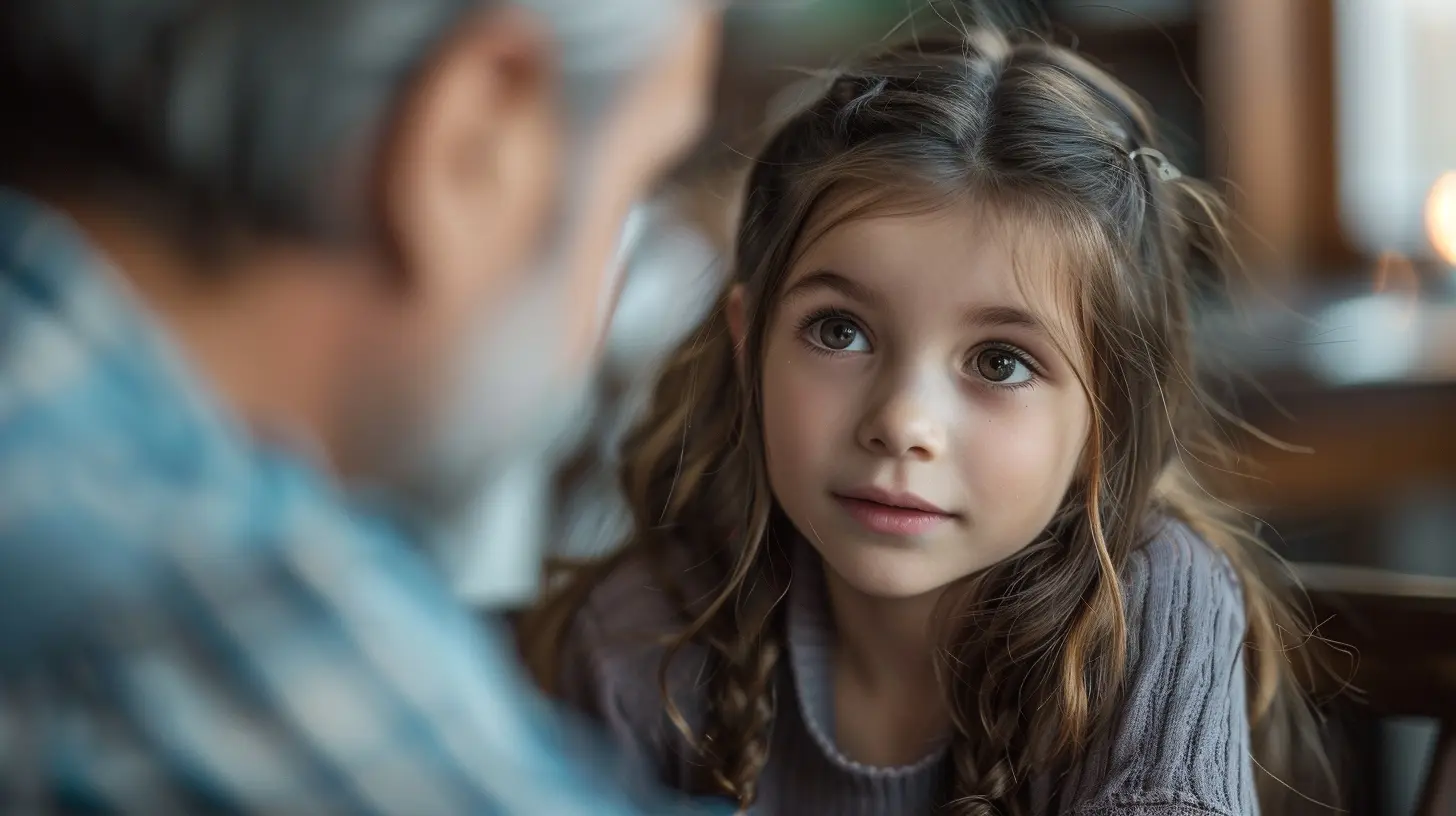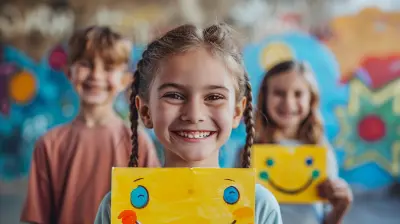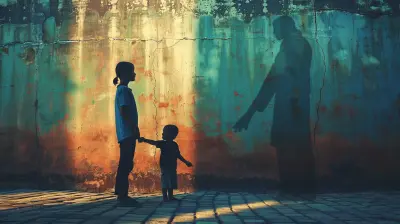Discipline Strategies to Help Kids Develop Problem-Solving Skills
19 November 2025
Parenting is one of the most rewarding yet challenging journeys we embark on. One of the biggest struggles? Teaching kids discipline while also nurturing their problem-solving skills. We want our children to develop the ability to think critically, analyze situations, and come up with solutions—all while maintaining respect and responsibility.
So, how do we discipline in a way that encourages growth rather than just enforcing rules? Let’s dive into some powerful strategies that not only correct behavior but also help kids become independent thinkers.

Why Problem-Solving Matters in Discipline
Life throws obstacles at all of us, and kids are no exception. From disagreements with friends to struggles in school, problem-solving is a crucial life skill. Instead of simply punishing them for mistakes, discipline should be a tool to help them learn how to navigate challenges.When kids develop problem-solving skills, they:
- Learn from their mistakes instead of fearing them.
- Become more independent in handling their own issues.
- Build confidence because they know how to approach problems.
- Improve their emotional intelligence by understanding how their actions affect others.
So, instead of thinking about discipline as punishment, think of it as a learning opportunity. Here’s how to make that shift happen.

1. Focus on Teaching, Not Just Punishing
Let’s be real—yelling and forcing kids into timeouts might stop bad behavior in the moment, but does it really teach them anything? Instead of using punishment as the go-to, try teachable moments.For example, if your child refuses to share their toys, instead of simply taking them away, sit down and talk about why sharing matters. Ask open-ended questions like:
- "How would you feel if someone didn’t share with you?"
- "What can we do to make sharing fair for both of you?"
This shifts their mindset from "I got in trouble" to "I learned something valuable."

2. Encourage Problem-Solving Discussions
Kids need practice thinking through challenges. When a problem arises, guide them through the process rather than just giving them the "right" answer.Use these steps:
1. Identify the problem – “What’s going on?”
2. Think of possible solutions – “What are some ways to fix this?”
3. Evaluate the options – “What might happen if we try each one?”
4. Choose a solution – “Which do you think will work best?”
This helps kids realize that there isn’t always just one right answer—sometimes, they have to explore different approaches.

3. Let Them Experience Natural Consequences
Sometimes, the best lessons come from experiencing the natural results of their actions. If your child forgets their homework, instead of rushing to school to drop it off, let them face the consequence of explaining to their teacher.Why? Because real-life consequences teach responsibility in a way that words often can’t. Of course, this doesn’t apply in dangerous situations (we wouldn’t let a toddler "learn" that running into the street is bad), but for everyday mistakes, natural consequences can be powerful teachers.
4. Model Good Problem-Solving Behavior
Kids learn more from what we do than from what we say. If they see us freaking out over small problems, they’ll likely do the same. But if we stay calm and problem-solve, they’ll follow suit.For example, if you spill juice all over the floor, instead of getting angry, say:
“Oops! That was an accident. Okay, let’s grab some paper towels and clean it up together.”
This normalizes problem-solving as something we all do, not something stressful or scary.
5. Use "I" Statements Instead of Blame
When disciplining, the language we use matters. Instead of saying, "You're being rude!" try, "I feel hurt when you speak to me like that. Let's think about a kinder way to say what you mean."Blaming puts kids on the defensive, but "I" statements encourage them to think about how their behavior affects others.
6. Encourage Emotional Regulation
Problem-solving isn't just about logic—it’s about managing emotions too. Teaching kids how to handle frustration, disappointment, or anger is just as important as teaching them to think through solutions.Ways to help kids regulate emotions:
- Encourage deep breaths before reacting.
- Use a feelings chart to help them name emotions.
- Teach them to take a break when they’re overwhelmed.
Once they’re calm, they’ll be in a much better mindset to solve problems effectively.
7. Set Clear and Fair Boundaries
Rules shouldn’t feel like random punishments—they should have clear reasons behind them. When kids understand why a rule exists, they’re more likely to follow it.Instead of saying, "Because I said so," explain:
- "We walk inside the house because running might cause accidents."
- "We finish our homework before screen time because learning is important."
When rules make sense, kids are less likely to resist them. And when they do break a rule, they’ll have a better foundation for understanding how to fix the situation.
8. Encourage Creative Problem-Solving
Not every problem has a simple solution—sometimes, creativity is key. Encourage kids to think outside the box.For example, if siblings are fighting over the TV, instead of deciding for them, ask:
“What’s a creative way you can both get what you want?”
Maybe they take turns, find a different activity, or play a quick game to decide. Giving them the space to brainstorm builds critical thinking skills.
9. Praise Effort, Not Just Results
Problem-solving takes practice, and kids won’t always get it right. Instead of only celebrating when they find the perfect solution, praise their effort along the way.- “I love how you thought of two different ways to solve that!”
- “You worked hard to fix that problem—that’s awesome!”
This builds perseverance, so they don’t give up when things get tough.
10. Give Them Choice and Responsibility
Kids feel more invested in solutions when they have some control over them. Instead of dictating consequences, involve them in deciding what’s fair.For example:
- "You forgot to clean up your toys. What do you think we should do to make it fair?"
- "You were late coming home. What can we do next time to make sure it doesn’t happen again?"
When kids feel like they have a say, they’re more likely to take responsibility.
Final Thoughts
Discipline isn’t just about stopping bad behavior—it’s about teaching kids how to make better choices. By focusing on problem-solving, we’re not just raising obedient children—we’re raising future adults who can handle challenges with confidence and resilience.Next time your kid faces a tough situation, resist the urge to simply hand them the answer. Instead, guide them, support them, and watch them grow into independent problem-solvers. Because at the end of the day, that’s what parenting is all about—preparing them for the world, one lesson at a time.
all images in this post were generated using AI tools
Category:
Discipline TechniquesAuthor:

Maya Underwood

